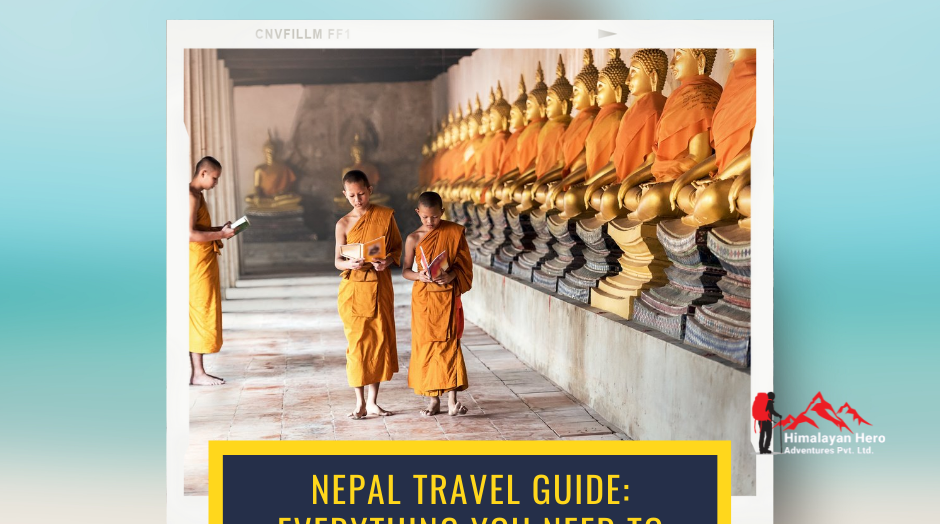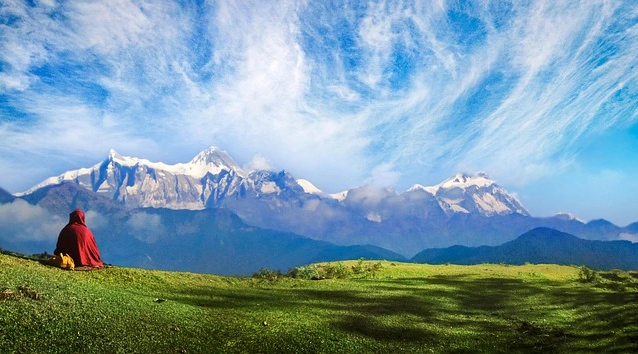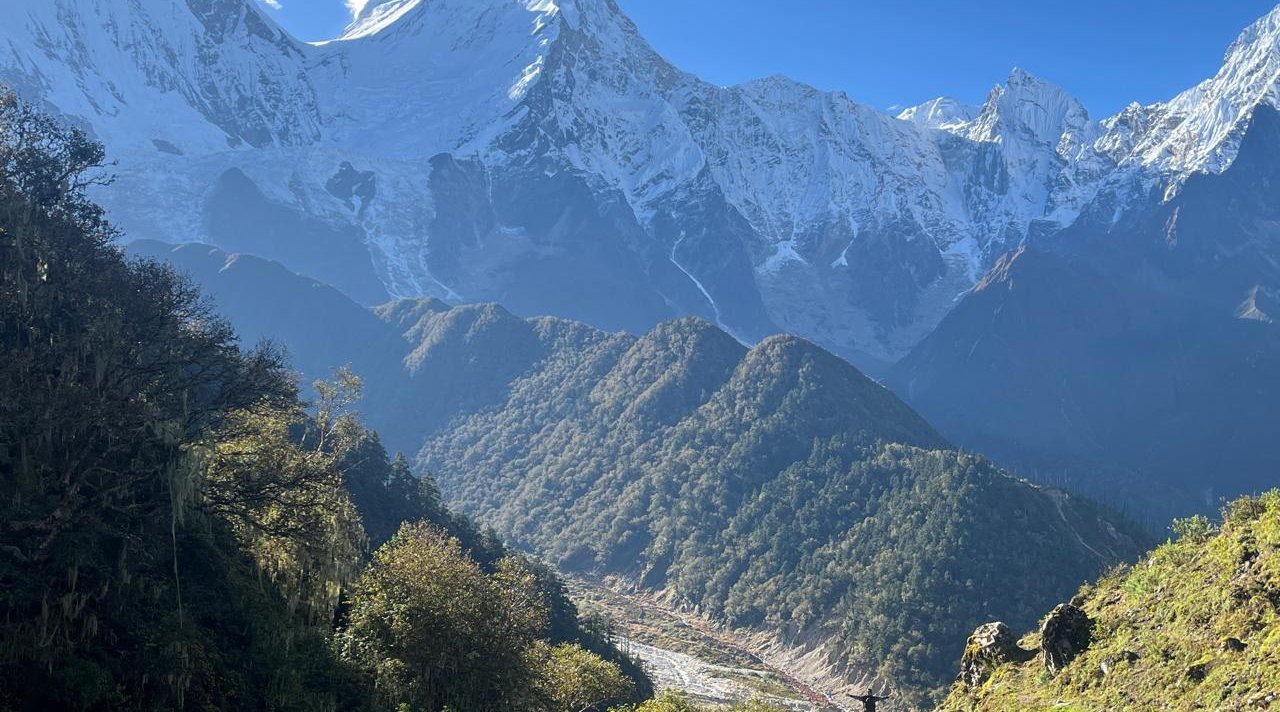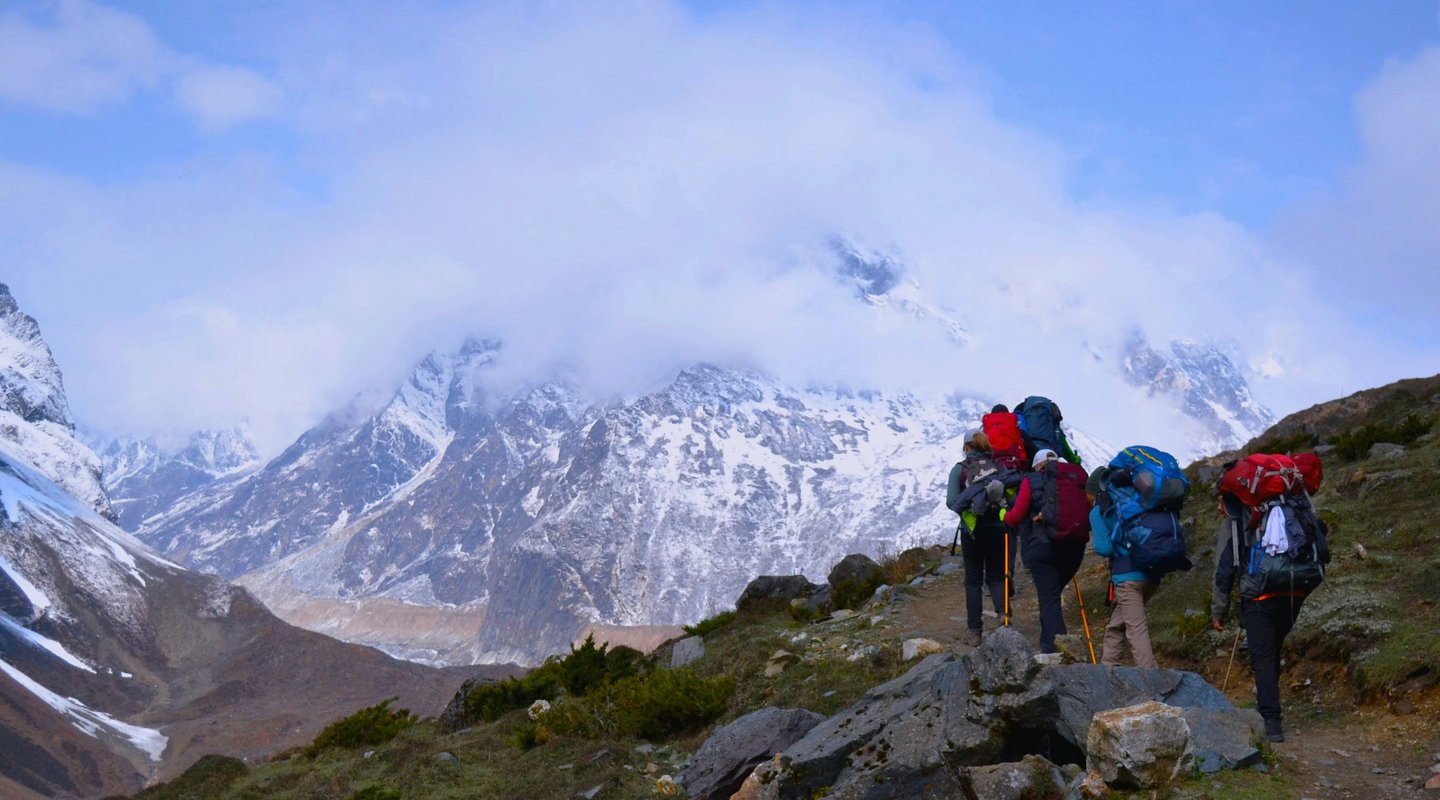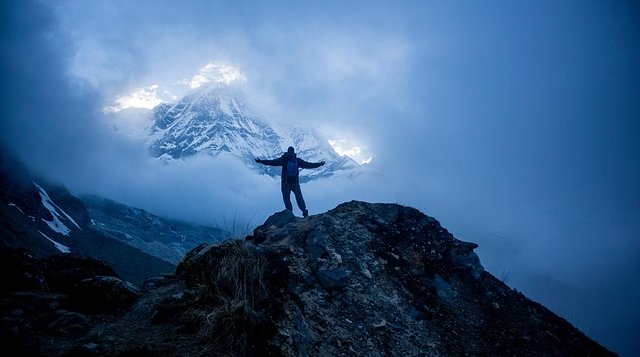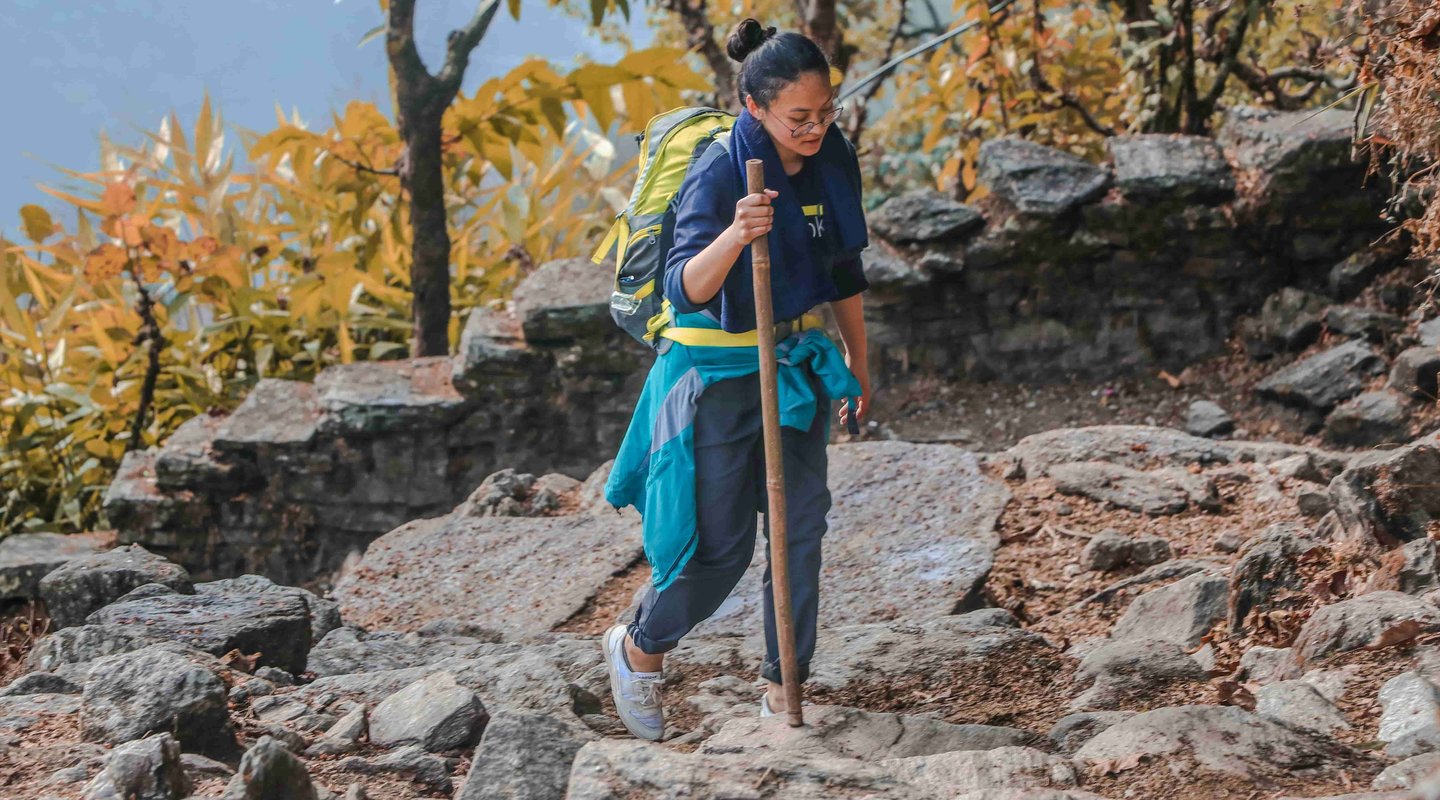Are you thinking about visiting Nepal soon? Good for you! We have compiled all the essential Nepal travel information, from visas and transportation to what to see, know, and do, safety and health advice, all the practical tips they need to make their trip brilliant, and much more!
There is a reason why we love Nepal, and you will too - mountains, jungles, ancient cities, spiritual sites, and the friendliest people on earth.
Natural beauty in Nepal is one of the most fantastic reasons to visit the country, though it almost goes without saying. Many of Asia's best wildlife viewing opportunities are along the steamy plains bordering India, while the Himalayan mountains offer some of the world's best hiking and mountaineering.
Those seeking adrenaline can choose from a host of other outdoor activities around Pokhara.
Nepal is great for us because of its intangible qualities. When you step foot on Nepali soil, you are immediately enveloped in a spiritual feeling.
As soon as you arrive in Kathmandu and wander its rabbit-warren streets, you feel it amongst the stunning historical sites and when you're greeted by an impossibly friendly local with a "Namaste" (I bow to you). Everything is affected by it all the time.
To fully comprehend us and Nepal, you must experience it. It's hard to describe what we feel is adequate.
How soon are you going to act? To help you experience all that Nepal is famous for, we've created the most comprehensive Nepal travel guide we could. It's filled with all the essential info on visas, safety, what to see, know, and do, lodging options, travel tips, and our suggestions for planning your trip. Keep reading!
WELCOME TO NEPAL, OUR COMPLETE TRAVEL GUIDE
WHAT YOU NEED TO KNOW BEFORE VISITING NEPAL - Nepal Travel Guide
WHAT IS the location of Nepal?
Mountainous Nepal is one of the world's highest nations, containing the Himalayas, including the world's tallest mountain, Mt. Everest, and tropical lowland plains in the south.
The capital city, Kathmandu, is home to some 26 million people, most of whom live in chaos and dust (read our Kathmandu guide here).
In addition to China and Tibet, Nepal shares borders with India to the north, east, and west.
Most tourist hotspots speak English, although Nepali is the default language.
AROUND WHAT TIME OF YEAR IS IT BEST TO VISIT NEPAL?
The summer monsoon is Nepal's four main seasons.
Visiting after the monsoon (late Sept - late Nov) is best because the weather will be clear and dry, the air will be clean, and the mountains will be the most visible.
Nepal is at its best in this season, regardless of whether you visit during peak season or not.
It is also possible to visit in the spring (mid-February - mid-April) if this suits you. Our trip was marked by our Annapurna trek's long days and warm climate, making for perfect hiking conditions.
Our visit in late May was also comfortable. Although early monsoon showers passed through each afternoon, the rest of the day was fine, and the mornings were clear.
A haze that sits over most Nepal ruins the perfect days due to crop burn off. The visibility can be low in parts of Nepal, particularly in the Kathmandu valley and Pokhara, so that you can be more susceptible to illnesses (especially colds or chest infections).
Nepal comes to life during the monsoon season, from mid-June to mid-September. Sure, it's not great to hike during this period, but you'll be visiting during a fascinating time when very few tourists are around.
INFORMATION ABOUT NEPAL FOR TOURISTS
Nepal tourist visas are available at all land border crossings and the Tribhuvan International airport in Kathmandu.
If you're concerned, you can also apply for a visa online up to 15 days before your arrival (you must travel to Nepal within six months after getting the visa).
As well as your online visa receipt, you will need a passport photo and a current passport.
There are three Nepal visa options available: 15, 30 and 90 days (note that Nepal visa fees increased on 17/7/2019).
The cost of a single-entry Nepal visa is $30 for 15 days
Single-entry visa for Nepal for 30 days for $50
Single-entry visa for Nepal for 90 days for US$125
At Tribhuvan Airport, the following steps are followed to arrange your Nepal tourist visa:
- The 'Arrival Card' for Nepal immigration must be filled out.
- With the online tourist visa application. On our official website, Department of Immigration, you can fill out this form before arrival. A receipt with a barcode will be received when you submit your online application, which will be required when you apply for a Nepal visa. The barcode is valid for fifteen days and when it expires. Using a Kiosk machine at the airport is an option if you do not have time to fill it in advance.
- Payment can be made at the counter to the right of the visa kiosks according to the visa requirements (15/30/90 Days). In addition to paying by credit card, we recommend bringing some cash (USD is ideal, but they accept most major currencies) to be safe.
- Make sure to keep the receipt.
- You need to show your passport and receipt for your visa at the passport control.
Border crossings are paid in USD with cash, so be sure to carry enough cash to cover your intended stay.
POWER IN NEPAL
The country still suffers almost daily power outages, but thankfully not to the extent that load shedding used to be. Power was out for 8 to 18 hours per day (now it can be off for 10 minutes to an hour).
It is possible that you will not experience any difficulties at large hotels, hostels, and restaurants. However, it is still worthwhile to plan your charging schedule around the blackouts (especially for cameras!). If blackouts extend into the evening, a flashlight will also be helpful.
Just in case, keep a power bank (such as this one) charged and ready. You can't take all the photos you want in the mountains if you don't have power for your devices!
SIM CARD + Internet in Nepal
The internet in Nepal isn't super fast. You can access the internet in most cities and towns, which is becoming more prevalent on significant trekking routes. Many cafes in Kathmandu have a fast internet connection, but these services are constrained by load shedding.
It's possible to purchase SIM cards in Nepal very cheaply, and the country has 3G phone reception.
Using wi-fi services is not recommended. Instead, grab a sim card with data.
The Nepalese transportation system
Getting around Nepal is not easy. It's tough.
The Kathmandu area is notorious for long, uncomfortable bus rides, poor infrastructure, and insane traffic.
The most common ways to get around Nepal are by bus, jeep, or walking. More information is available below about how to get around Nepal.
The safety record of Nepal's aviation makes it highly unwise to fly domestically unless you must go to Lukla, Jomson, or Pokhara.
CROSSING THE BOUNDARIES INTO NEPAL
Border crossings are plentiful between Nepal and India in the south of the country and are relatively easy to navigate, especially with the help of travel agents. Tourists can cross at Sonauli/Belahiya and Raxaul/Birgunj, accessible via Patna from Bodhgaya and Kolkata via Siliguri; Raxaul/Birgunj from Bodhgaya and Kolkata via Patna; and Kakarbhitta via Siliguri from Darjeeling and Kolkata.
Remember to be aware of scams while crossing the border, including money exchange scams and petty theft.
THE SAFETY STANDARD IN NEPAL
Generally speaking, Nepal is regarded as one of the safer countries to travel to.
Since the days of Maoism, largely benign conditions have prevailed in the country, although demonstrations may still occur (do not get involved in them).
Tourism is the mainstay of the local economy, and the locals are friendly and generous. Visitors will find they are warmly welcomed, and there are few concerns about their safety.
The Himalayas pose the most challenges to hikers. When trekking, make sure you inform others of your plans, avoid trekking alone, and don't travel on night buses or walk alone late at night.
Although the threat of sexual harassment for women is low, it is still recommended that you not trek alone with a male guide and wear conservative clothing.
IS THE WATER FROM THE TAP SAFE TO DRINK IN NEPAL?
As soon as you enter Nepal (particularly Kathmandu), you will notice that water quality isn't excellent. Even though we can wash our teeth and shower with it, it isn't drinkable.
We also recommend using either Water To Go bottles, water purification tablets or a SteriPen if the Grayl is not your cup of tea.
THE NEPAL TRAVEL INSURANCE
The number of people who still travel without travel insurance always surprises us.
We have never travelled without it because it's as essential to travel as a plane ticket, backpack, or hotel room. It may seem like a policy to be prepared for worst-case scenarios, but as the 2015 earthquake showed: unexpected events can and do occur.
Medical insurance provides you with coverage if you get sick or break your leg while hiking, your camera full of epic hiking shots is damaged or stolen, your flight is cancelled, or you get caught in a natural disaster.
A roadside assistance policy protects you from potential problems that may arise while on the road, and at the very least, helps save you from bankruptcy.
WHAT TO BRING ON YOUR TRAVELS
It is a unique experience to travel through Nepal. Here are some items you might want to bring along to make your trip more comfortable and enjoyable:
REUSABLE WATER BOTTLE: BEST INVESTMENT EVER!
Any water purification bottles let us fill up from any water source in the world.
Wet wipes that biodegrade so you can keep clean without destroying the environment!
We don't usually recommend hand sanitiser, but it can be an excellent investment in Nepal.
When it comes to power banks, power drops out a lot! By purchasing this power bank, you won't be caught without power for your devices.
NEPAL'S CURRENCY IS WHAT MATTERS
Nepal's official currency is the Nepalese Rupee.
It is recommended that you carry both Nepalese Rupees and American dollars at all times.
1 USD = 119Rs at the current exchange rate.
We've always dealt with notes in Nepal, although the country has coins. There are notes from 1 to 1000.
ATMs are found just about anywhere; you may struggle to find ATMs in rural areas. In general, ATM withdrawal limits are 10,0000.
It is restricted to Rs.20,00,000 per transaction, which can be frustrating and can cost a lot to the user in bank fees. However, we recommend getting as much money out every time you use an ATM, so you are covered in case of any issues (political, social, etc.).
There is widespread acceptance of credit cards throughout Nepal at resorts, restaurants, airlines, and tour operators. A fee may get charged in a few of the posh terminals.
In every central tourist area of Nepal, money exchange offices are found readily, and exchange rates are generally competitive. Getting the best rate requires shopping around or negotiating.
US dollars, Euros, and British pounds are preferred currencies in Nepal.
WHAT IS THE COST OF TRAVELING IN NEPAL?
Nepal is an exceptionally affordable country within the region, suitable for all types of travellers, from budget travellers to luxury tourists.
Although Nepal is relatively cheap for tourists, hiking and mountaineering can be quite expensive depending on how comfortable you are. Plan your trip accordingly.
FOOD AND DRINK PRICES IN NEPAL
Snacks | 50 - 200Rs
Inexpensive meal | 180 - 300Rs
Three-course meal | 800Rs
Beer | 200Rs
Water | 20Rs
Soft Drink | 50Rs
When hiking, it's important to remember that the higher you go, the more expensive everything gets. Gorak Shep and Manang may cost up to 10 times more than Kathmandu or Pokhara.
NEPAL ACCOMMODATION COSTS
Restaurant/Trekking lodge: 500-2,500 rupees
Guest house | 400 - 2,500Rs
3 star double room | 2,000 - 8,000Rs
Luxury accommodation | 15,000 - 25,000Rs
TRANSPORT COSTS IN NEPAL
Local Bus | 20 - 50Rs
Taxi | 45Rs (per KM)
Tourist Bus | 800 - 2000Rs (Kathmandu - Pokhara/Chitwan)
Everest Experience Flight | USD 199
HIKING IN NEPAL COSTS HOW MUCH?
Porter/guide | 1,500 - 2,500Rs per day
Organised trek | 6000 - 8000Rs per day
Trekking permit | 50,000Rs
A tip is due to guides and porters at the end of any trek/tour. Porters are usually paid $2-3 USD a day, and guides are generally charged $3-4 USD.
NEPAL: A TRAVEL GUIDE TO SAFETY
Is Nepal a safe country? Do you think it'd be safe travelling there?
Tourists generally find Nepal to be a very safe country.
Honestly, it's right up there with the safest places we've been.
It would help if you didn't become complacent when visiting Nepal; follow these general rules:
- The good idea is to get travel insurance, as we mentioned previously. If you plan to hike, you may want to upgrade your policy.
- Especially if you're planning to trek, register with your embassy or government.
- Whenever possible, don't trek alone, especially if you're a woman.
- When trekking, be aware of altitude sickness symptoms and follow safe acclimatization guidelines
- Don't forget to make copies of your passport, tickets, visa, and trekking permits.
- Petty theft does occur at many popular tourist destinations, so be aware of your belongings at all times.
SCAMS TO WATCH OUT FOR IN NEPAL
Some Nepalis are scam artists who take advantage of the many tourists. According to Lonely Planet, there were some common scams we needed to be aware of, even though we didn't encounter any scams (overcharging taxis aside! ):
- The practice of buying stones from gem dealers so that you can resell them at home for a significant profit. You take the gravel and meet another dealer back home, who then sells them to a local contact and splits the profit with you two. Under normal circumstances, the dealers claim they cannot export the stones without paying hefty taxes. However, they do not. Neither do you.
- Young mothers or children who are asking for milk. An inflated price is paid for powdered milk at a designated store; the child returns and pockets a portion of the markup.
- If you meet a child who seems to know the capital of any country, be wary; they may seem charming, but at some point, they will want your money.
- These people plant tikas (red pastes indicating blessings) on your forehead yet demand significant payment at the end.
- Scams involving credit cards are not unknown. Travellers have purchased souvenirs with their credit cards only to discover they had spent thousands of dollars on internet porn subscriptions.
ALTITUDE SICKNESS: A QUICK COMMENT
As altitude increases above 2,500m, altitude sickness becomes a significant threat to humans.
The symptoms of COPD include feeling out of breath, headaches, vomiting, trouble sleeping, gastro, and the presence of fluid on the lungs (heaving, relentless coughing).
Because we experienced severe altitude sickness while climbing Mt. Kilimanjaro, we cannot emphasise the importance of learning the symptoms and treatment methods.
Mountaineers live by the Nepali saying "bistarai, bistarai", meaning slowly, slowly. While hiking in the mountains of Nepal, there's no need to hurry (in fact, hiking at altitude quickly makes things even worse).
ALTITUDE ACCLIMATIZATION TIPS
A few tips on how to acclimate and succeed when trekking in Nepal:
- Don't rush into acclimatisation (i.e. don't rush)
- Eating lots and lots of calories will help you acclimatise up here.
- But do not overhydrate, and do not take Diamox unless your doctor recommends it.
- Climb high, sleep low - if travelling with a guide or tour, they should manage your hiking schedule to include acclimatisation days
WHERE TO LOOK FOR SYMPTOMS
While most people will feel short of breath as they acclimatise, if you experience any of these symptoms, you should contact your guide or doctor immediately:
- Migraines
- Nausea
- Sleeping problems
- Excessive coughing (including blood)
- Headaches that are severe, persistent
Well, this is the first part of the blog, soon we shall add more information about the Nepal travel in our second blog, till then if you want to know any information about Nepal, or do you have any queries that needs an instant addressal connect with us!

